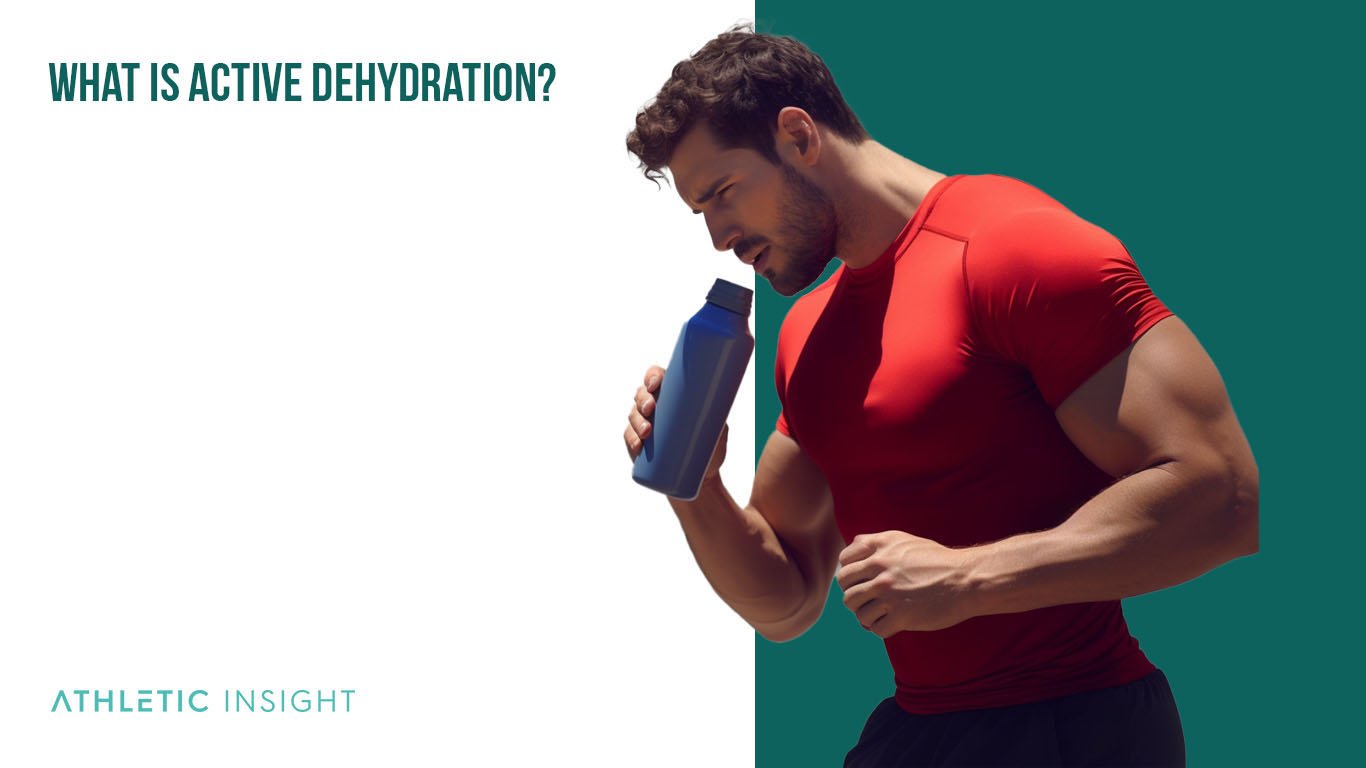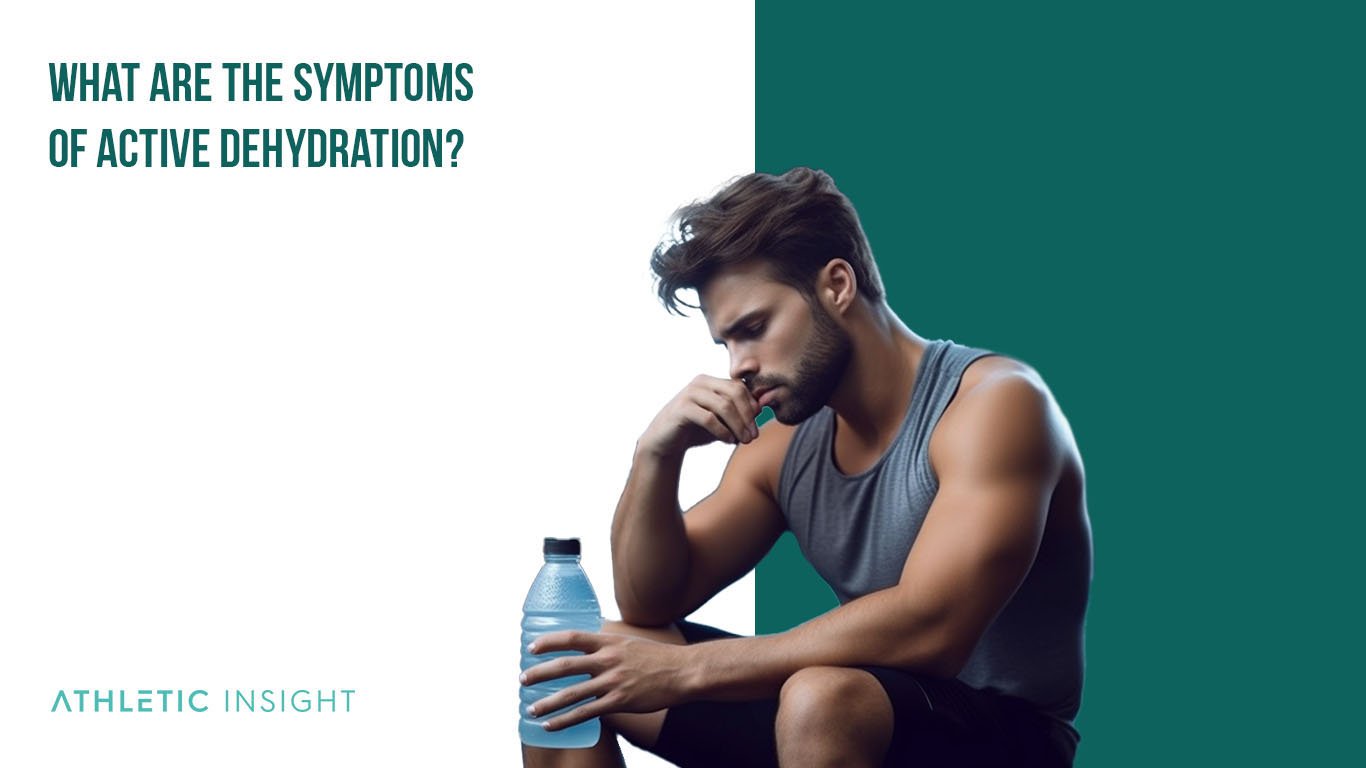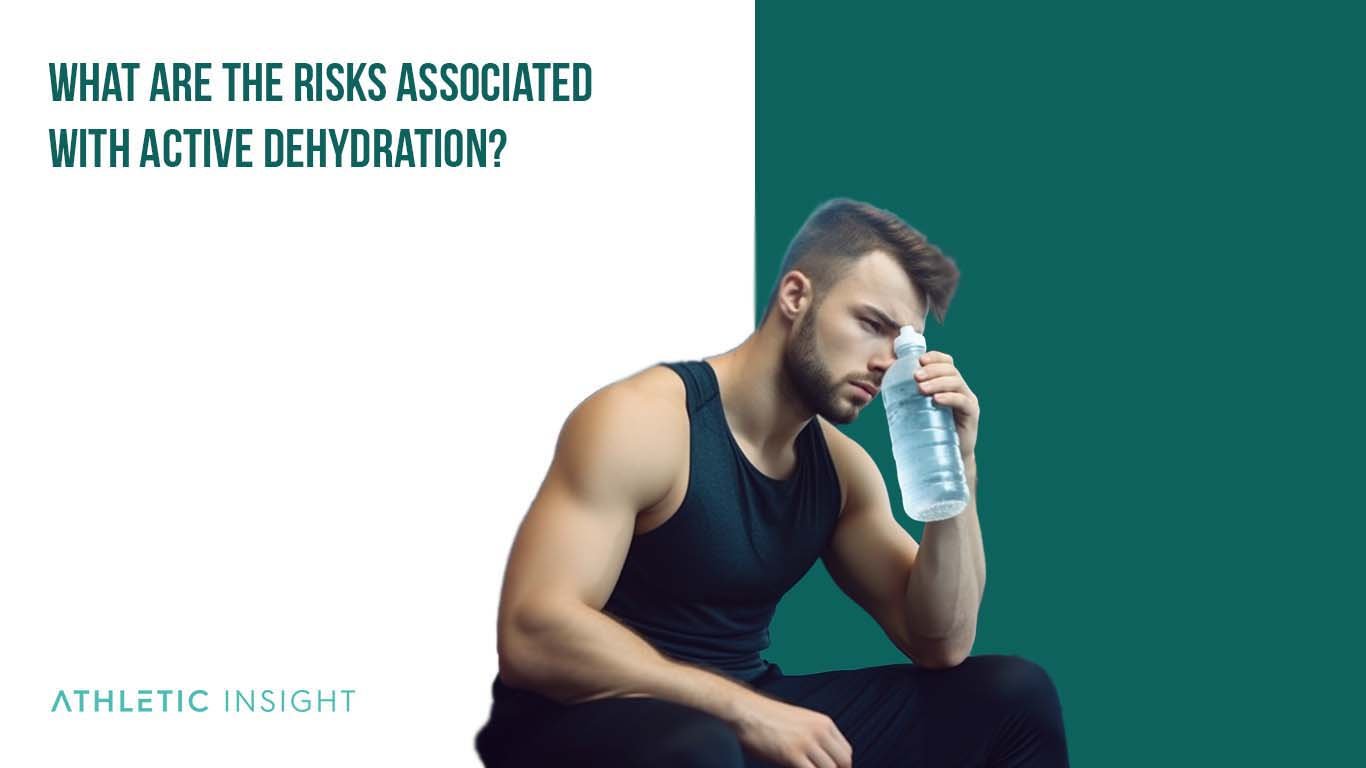Active dehydration is a condition that can affect individuals engaged in physical activities or sports. This article explores the definition, causes, symptoms, types, risks, and treatment options for active dehydration, offering insights into the long-term effects of the condition and strategies for management and prevention.
What is Active Dehydration?
Active dehydration refers to a state of fluid imbalance within the body, primarily resulting from excessive fluid loss during intense physical activities or sports. This condition occurs when the body loses more water and electrolytes through sweating, respiration, and other physiological processes than it can replenish through fluid intake.

What are Common Causes of Active Dehydration?
There are six common causes of active dehydration, these include prolonged or intense exercise, inadequate fluid intake, exercising in hot or humid environments, consuming diuretics, such as caffeine or alcohol, illness or infection causing fever, vomiting, or diarrhea, and insufficient acclimatization to a new climate or altitude.
- Prolonged or intense exercise
- Inadequate fluid intake
- Exercising in hot or humid environments
- Consuming diuretics, such as caffeine or alcohol
- Illness or infection causing fever, vomiting, or diarrhea
- Insufficient acclimatization to a new climate or altitude
What are the Symptoms of Active Dehydration?
Active dehydration causes many symptoms that when ignored, can lead to serious health risks. These symptoms include thirst, dry or sticky mouth, fatigue or weakness, dizziness or lightheadedness, dark yellow urine, decreased urine output, headaches, rapid heartbeat or breathing, sunken eyes, muscle cramps or spasms, visible confusion or irritability.

- Thirst
- Dry or sticky mouth
- Fatigue or weakness
- Dizziness or lightheadedness
- Dark yellow urine
- Decreased urine output
- Headaches
- Rapid heartbeat or breathing
- Sunken eyes
- Muscle cramps or spasms
- Visible confusion or irritability
How is Active Dehydration Treated?
Active dehydration is treated by replenishing lost fluids and electrolytes through the consumption of water, sports drinks, or oral rehydration solutions. In severe cases, intravenous (IV) fluids may be administered. It is crucial to monitor the individual’s symptoms and response to treatment, adjusting fluid intake as needed to ensure proper rehydration.
What are the Risks Associated with Active Dehydration?
When active dehydration is left untreated, escalation to more serious conditions may occur. These risks associated with active dehydration include heat exhaustion, heat stroke, kidney dysfunction or failure, electrolyte imbalances (such as hyponatremia), decreased cognitive and physical performance, seizures, hypovolemic shock, and coma or death in extreme cases.

- Heat exhaustion
- Heat stroke
- Kidney dysfunction or failure
- Electrolyte imbalances, such as hyponatremia
- Decreased cognitive and physical performance
- Seizures
- Hypovolemic shock
- Coma or death in extreme cases
What are the Different Types of Active Dehydration?
Active dehydration can be classified into three primary types; hypertonic, hypotonic, isotonic dehydration.
1. Hypertonic
Hypertonic dehydration is characterized by a higher concentration of solutes, such as electrolytes, in the body’s fluids. This type of dehydration typically results from insufficient water intake, leading to increased fluid retention in the body’s cells. A hypertonic dehydration can cause symptoms such as thirst, fatigue, and muscle cramps. Treatment includes consuming water and electrolyte-rich fluids to restore fluid balance.
2. Hypotonic
Hypotonic dehydration occurs when the body’s fluids have a lower concentration of solutes than the cells, causing water to move from the extracellular space into the cells. This type of dehydration can result from excessive sweating or the overconsumption of plain water without adequate electrolyte replacement. Symptoms may include dizziness, nausea, and rapid heartbeat. Treatment for hypotonic dehydration involves consuming electrolyte-rich fluids to correct the imbalance.
3. Isotonic
Isotonic dehydration is a state of fluid loss where the concentration of solutes in the body’s fluids remains consistent with that of the cells. This isotonic dehydration typically results from a combination of water and electrolyte loss, often due to intense physical activity or illness. Symptoms can include thirst, fatigue, and decreased urine output. Treatment involves consuming a balanced mix of water and electrolytes to restore fluid balance.
What are the Long-Term Effects of Active Dehydration on Health?
Active dehydration can have various long-term effects on health. Although it is often seen in athletes, or those who frequently engage in physical activity without replenishing their body’s water supply, anyone can suffer from it. The severity and impact that it will cause depends on the level of dehydration and how often the body is exposed to active dehydration. These long-term health effects include
- Chronic fatigue
- Impaired cognitive function
- Decreased immune function
- Kidney stones or kidney damage
- Increased risk of heat-related illnesses
- Reduced athletic performance
- Increased risk of urinary tract infections
- Prolonged recovery time from injuries
What are the Best Strategies for Managing Active Dehydration in Children and Adults?
Active dehydration occurs when you lose more water and electrolytes through sweating than you take in. It’s important for both children and adults to replenish these losses to maintain their health and performance. If you are someone that sweats more during physical activity, than you’ll need to replenish with even more electrolytes. Here are some strategies to manage and prevent active dehydration for both children and adults.
- Monitor fluid intake during physical activities
- Consume electrolyte-rich fluids, such as sports drinks, to replace lost minerals
- Adjust fluid consumption based on environmental factors, such as temperature and humidity
- Take regular breaks during exercise to rehydrate and cool down
- Gradually acclimate to new climates or altitudes
- Avoid alcohol and excessive caffeine consumption, as these can exacerbate dehydration
- Monitor urine color to ensure proper hydration
How Can Children Safely Manage Active Dehydration with Electrolytes?
Children can safely manage and avoid active dehydration through the use of electrolytes and proper hydration techniques. Children are made up of 60-75% water, so ensuring these levels remain constant is vital to their survival. To help children manage and avoid active dehydration you should provide easy access to fluids, stress the importance of thirst, explain the negative effects of sugar, make hydration enjoyable, and utilize electrolyte drinks like LMNT.
- Provide easy access to fluids: Ensure that your children always have fluids within reach. This could involve sending them to school with electrolyte water bottles or preparing large volumes of electrolyte drinks for sporting events.
- Stress the importance of thirst: Encourage your children to drink according to their thirst. Overhydration can worsen electrolyte imbalances.
- Explain the negative effects of sugar: Educating your child about the adverse effects of sugar is a challenging but necessary task. Help them understand the health consequences of consuming sugary drinks, using examples that resonate with them. For instance, you could associate avoiding sugary drinks with avoiding the dentist or becoming as strong as their favorite superhero.
- Make hydration enjoyable: To encourage your child to hydrate properly, make it a fun experience. Enhance the flavor of water with natural ingredients like lemon juice or slices of citrus fruits. You can also stimulate their senses with brightly colored water bottles and creative straws. Remember, positive reinforcement can significantly influence behavior.
- Utilize electrolyte drinks like LMNT: LMNT is not only safe for children but also beneficial, providing essential minerals such as sodium, potassium, and magnesium to support optimal hydration. Made only with electrolytes, stevia, citric acid, malic acid, and natural flavors, LMNT is devoid of sugar, artificial ingredients, or any unwanted additives. It’s a fun, tasty way to keep your children hydrated and an effective solution to combat the sugar problem.
How Does Active Dehydration Affect the Body’s Physiology?
Active dehydration disrupts the body’s fluid balance, impairing essential physiological processes. This can lead to reduced blood volume and blood pressure, decreased oxygen delivery to tissues, and impaired temperature regulation. Furthermore, dehydration can compromise cellular function, causing electrolyte imbalances and altering the body’s acid-base balance. These disruptions can have detrimental effects on overall health and athletic performance.
How Does Exercise Affect Active Dehydration?
Exercise increases the body’s metabolic rate, generating heat and promoting fluid loss through sweating and respiration. Intense or prolonged exercise can cause significant fluid loss, leading to active dehydration. The risk of dehydration is heightened during exercise in hot or humid environments, as the body struggles to dissipate heat effectively.
How Can Athletes Prevent Active Dehydration During Sports?
Athletes that participate in intensive or endurance sports, are at a high risk of active dehydration due to the copious amounts of sweat they excrete from their bodies. Here are six strategies that athletes can use to prevent dehydration.
- Begin exercise well-hydrated by consuming fluids before, during, and after physical activity
- Develop a personalized hydration plan based on individual needs, intensity and duration of exercise, and environmental conditions
- Monitor fluid intake and adjust as needed to maintain proper hydration
- Consume electrolyte-rich fluids or supplements to replace lost minerals
- Avoid alcohol and excessive caffeine consumption
- Wear lightweight, moisture-wicking clothing to promote sweat evaporation and cooling
Should I Rehydrate While Doing Fitness Exercises?
Yes, it is essential to maintain proper hydration during fitness exercises to prevent active dehydration and support optimal performance. Consuming fluids before, during, and after exercise can help replenish lost water and electrolytes, ensuring the body’s physiological processes function effectively.
Does Drinking Fluids with Electrolytes Improve the Body’s Hydration?
Yes, consuming fluids with electrolytes can enhance the body’s hydration status by replenishing essential minerals lost through sweating and other physiological processes. Electrolytes help maintain fluid balance, support muscle function, and regulate nerve activity, making them crucial for overall health and performance.
Is Dehydration a Type of Sports Injury?
While dehydration is not a sports injury in the traditional sense, it can contribute to the development of injuries and impair athletic performance. Dehydration can lead to muscle fatigue, cramps, and decreased coordination, increasing the risk of strains, sprains, and other injuries that will have an impact on overall sports performance.
Impaired cognitive function and slower reaction times associated with dehydration can also increase the likelihood of accidents during sports or physical activities. Therefore, it is essential to address and prevent dehydration as a critical component of sports safety and injury prevention.



